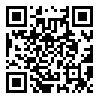目的了解南宁市基层医疗卫生机构全科医生的卫生应急培训需求,为全科医生卫生应急培训的实施提供参考。方法采用问卷调查法对南宁市基层医疗卫生机构的全科医生进行卫生应急培训需求调查,了解其对卫生应急培训必要性的看法和参加卫生应急培训的意愿性,以及对培训形式、方法的需求,并比较不同培训次数全科医生对突发应急事件的胜任能力。结果共纳入研究对象422名,其中415名(98.34%)全科医生认为卫生应急培训具有必要性,411名(97.39%)全科医师愿意参加卫生应急培训。不同性别、年龄、学历、职称及工作年限的全科医生在参加卫生应急培训必要性及意愿性方面差异无统计学意义(P>0.05)。不同性别、年龄、学历、职称及工作年限的全科医生对于培训方式的选择差异具有统计学意义(P<0.05)。结论应增加基层医疗卫生机构全科医生卫生应急培训机会,充分利用网络课程,针对不同年龄、职称人员开设多种形式的培训班,提升培训效果,并根据各地具体情况,加强针对性指导,提升基层医疗卫生机构的卫生应急能力。
当前位置:首页 / 南宁市基层医疗卫生机构全科医生卫生应急培训需求的调查分析
论著·调查与研究
|
更新时间:2023-11-14
|
南宁市基层医疗卫生机构全科医生卫生应急培训需求的调查分析
Demands for health emergency training of general practitioners in Nanning grassroots medical and health institutions: an investigation and analysis
广西医学 2023第45卷17期 页码:2121-2126
作者机构:彭玉凤,硕士,助理研究员,研究方向:社会医学与卫生事业管理。
基金信息:广西壮族自治区卫生健康委员会自筹经费科研课题(Z20211453)
- 中文简介
- 英文简介
- 参考文献
ObjectiveTo understand the demands for health emergency training of general practitioners in Nanning grassroots medical and health institutions, and to provide reference for the implementation of health emergency training for general practitioners. MethodsA questionnaire survey was performed on general practitioners from Nanning grassroots medical and health institutions to investigate their demands for health emergency training, and to understand their opinions on necessity of health emergency training and willingness for participating in health emergency training, as well as their demands for training forms and methods. The competency on emergency situations was compared between general practitioners with different training frequencies.ResultsA total of 422 research subjects were enrolled, of which 415 (98.34%) general practitioners thought that health emergency training was necessary, and 411 (97.39%) general practitioners were willing to participate in health emergency training. There was no statistically significant difference in necessity and willingness for participating in health emergency training between general practitioners with different gender, age, educational level, professional title, and working years (P>0.05). There were statistically significant differences in the choice of training methods between general practitioners with different gender, age, educational level, professional title, and working years (P<0.05). ConclusionIt is necessary to increase the opportunities for health emergency training for general practitioners from grassroots medical and health institutions, create various forms of training courses for personnel with different ages and professional titles by making full use of online courses to improve the training effectiveness, strengthen targeted guidance according to specific situations in various regions, and enhance the health emergency response capabilities of grassroots medical and health institutions.
-
无




 注册
注册 忘记密码
忘记密码 忘记用户名
忘记用户名 专家账号密码找回
专家账号密码找回 下载
下载 收藏
收藏
